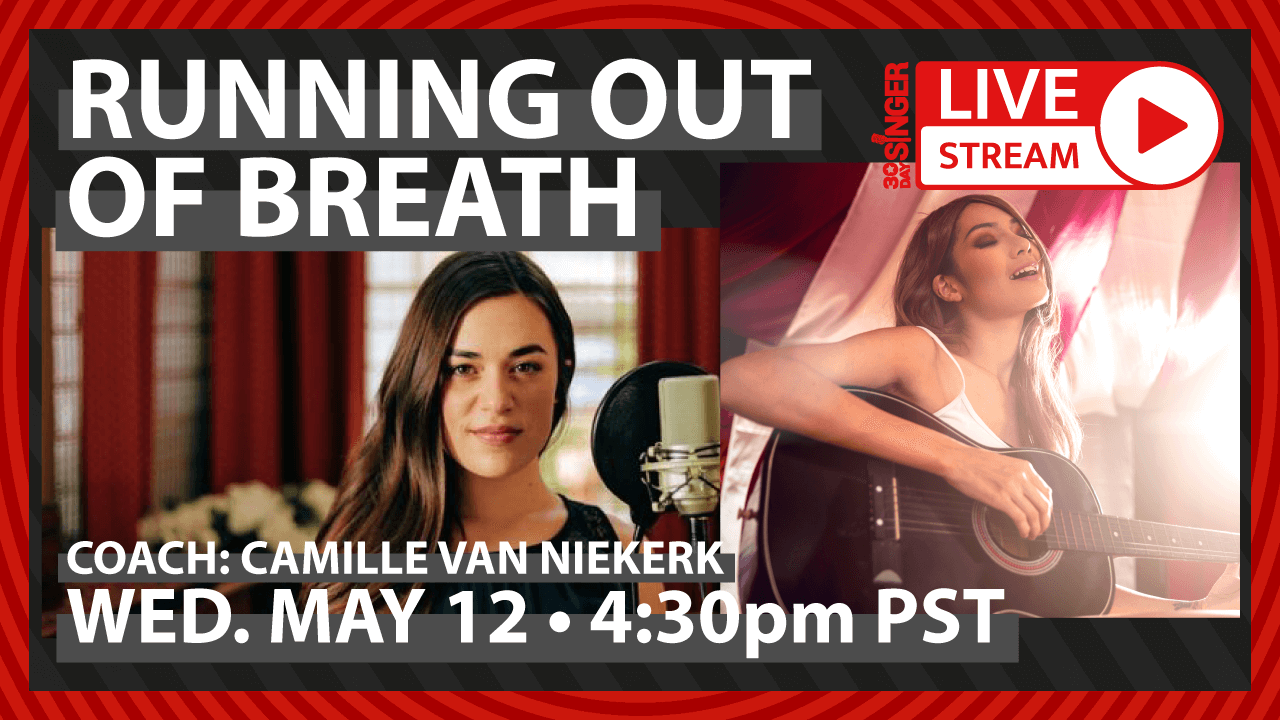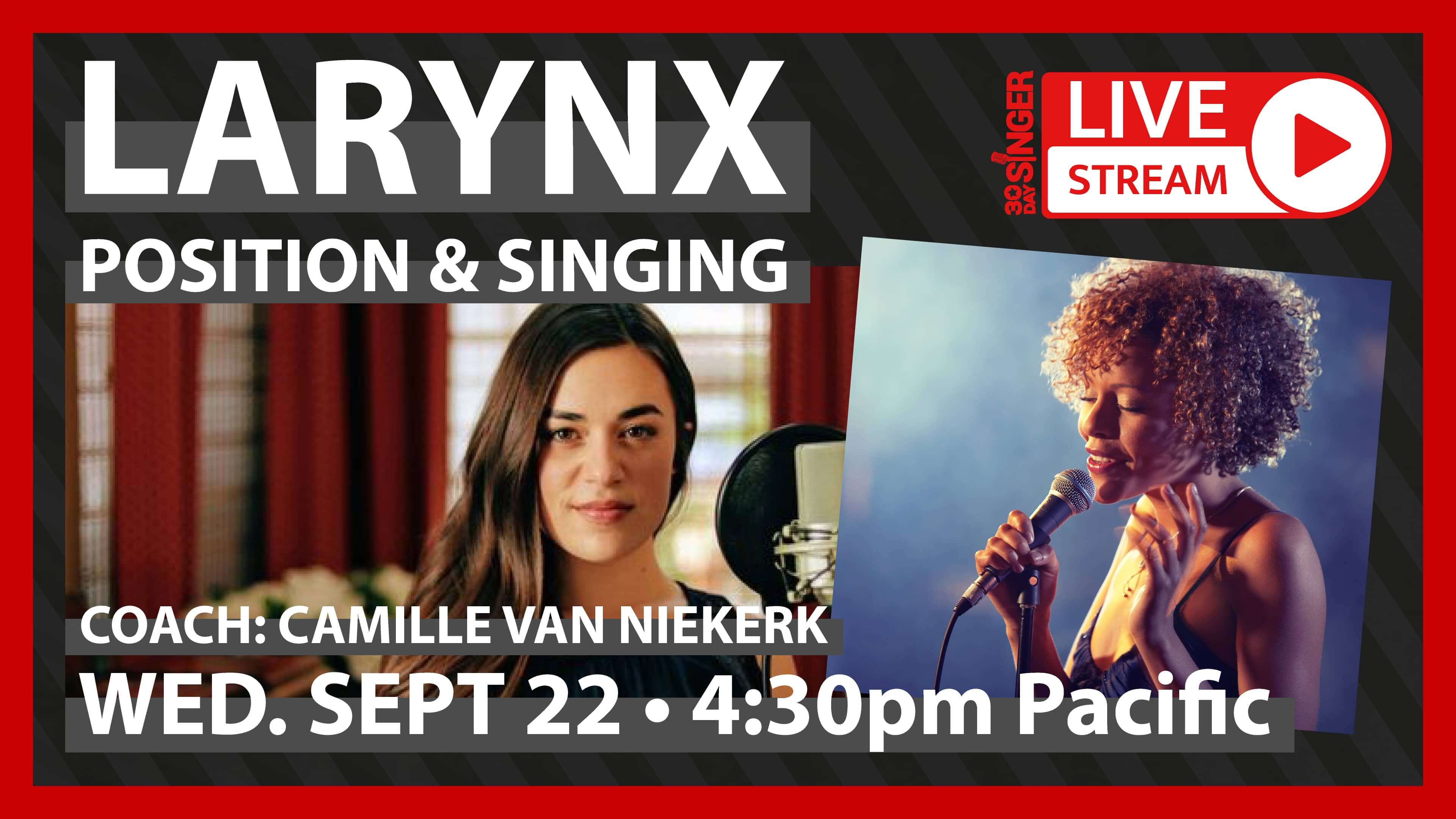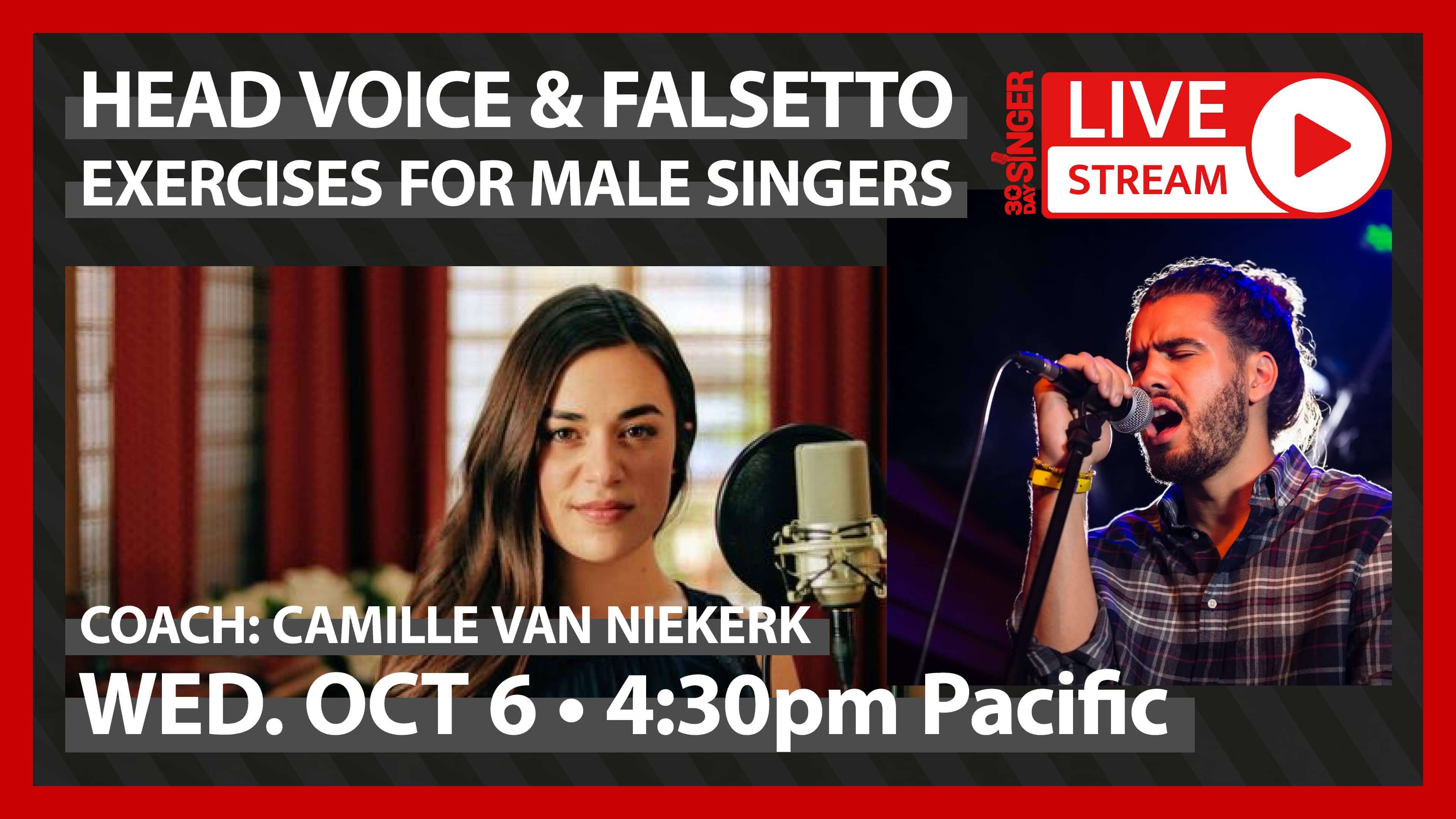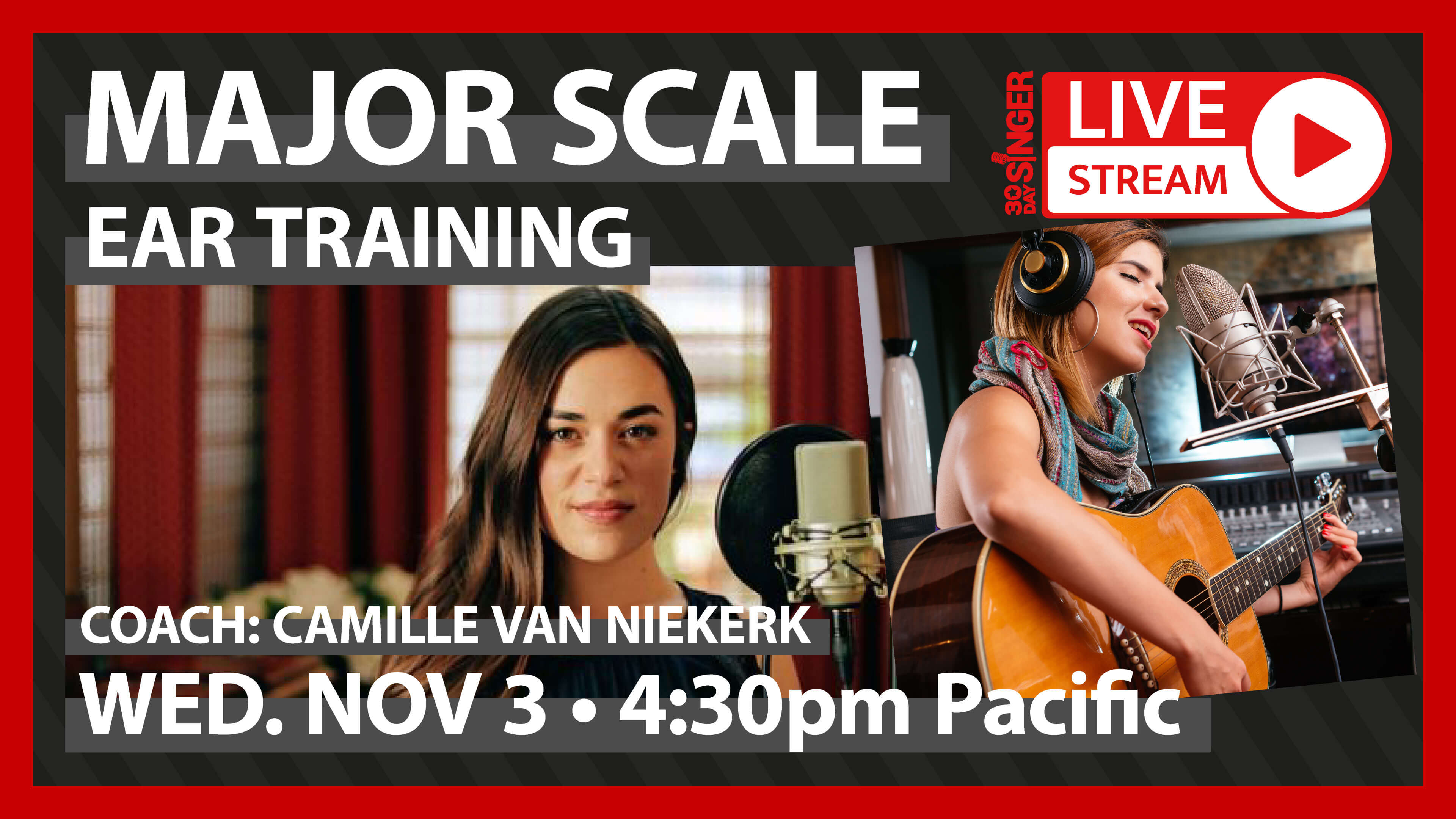Vocal Technique
Welcome to the Vocal Technique section of 30 Day Singer. These lessons focus on developing key singing techniques like vibrato, belting, singing higher or lower, breath control and much more. We offer guidance on how to learn these techniques and perfect them so you can perform with confidence. Some of these techniques are introduced in our beginner courses so if you need more time and focus on a particular area, these lessons come in very handy. You can bounce between these lessons freely or use a set combination of these lessons as part of your daily practice routine to monitor progress.
TUTORIALS
Running Out Of Breath While Singing
By Camille van NiekerkDo you run out of breath while singing your favorite songs? This Live Lesson will show you some tips and tricks on how to learn to sustain your breath for longer! We'll cover: -Why it's not just about your breath: it's about your vocal folds, too! -Warmup exercises to activate your abdominal muscles -Common issues: not planning breaths, gasping/shallow breathing, insufficient cord closure -How to work on your breathing within songs
Mindset For Beginning Singers
By Camille van NiekerkAre you a beginning singer? Here are a few tips on the mindset you should have when jumping in! In this lesson we'll cover singing & your brain, how to avoid frustration & burnout, setting achievable goals, and more!
Build Vocal Agility For Riffs & Runs
By Camille van NiekerkHere's how to build your agility to perform and execute vocal riffs and runs. In this lesson we'll go over exercises to help your voice move more quickly, running through the major and pentatonic scales, one-direction riffs, and riffs with directional changes.
Easy Intervals For Beginner Singers - Part 2
By Camille van NiekerkIn this Live Lesson about intervals we'll cover intervals up to an octave, well known songs to learn each interval, major scale “bungee” exercise, ascending & descending and testing your ear with resources to keep practicing!
Larynx Position & Singing
By Camille van NiekerkIn this Live Lesson we'll cover what the larynx is & what it does, laryngeal height & tone, when to use a high/low larynx, what is a "tuned" larynx, the larynx & vowels, the magic of the UH vowel and more!
Singing 7th Chords
By Camille van NiekerkIn this Live Lesson we'll cover what a seventh chord is, major/minor 7th chords, dominant seventh chords, half-diminished seventh chords, diminished seventh chords and popular song examples with 7th chords.
Head Voice & Falsetto Exercises For Male Singers
By Camille van NiekerkIn this Live Lesson we'll cover how to find your head voice function, how to transition into and out of head voice, how to develop tone & power in head voice as well as songs to practice your head voice function.
How To Sing Diminished & Augmented Chords
By Camille van NiekerkIn this Live Lesson we'll cover: Diminished fifths & augmented fifths (with song examples), how to build diminished & augmented chords, adding sevenths, and hearing these chords in a chord progression.
Do You Know Your Major Scale?
By Camille van NiekerkIn this Live Lesson we'll cover: stepwise motion, "skips" or "leaps", and building chords from the major scale.
Head Voice And Falsetto For Male Singer
By Camille van NiekerkEven if you don’t plan to sing a lot of songs that use head voice, you still need to work on that function to sing with greater ease and flexibility, to extend your range, and to develop a powerful, healthy mix. Join Camille in this lesson series on head voice & falsetto for male singers!
Frequently Asked Questions
Some great vocal warmups for singers start with gentle humming or lip trills to relax and engage your vocal cords without straining them. Then, work through some scales to gradually increase your pitch range and get your voice fully warmed up.
For a quick 5 minutes vocal warm up, try some lip trills or gentle humming for a couple of minutes. It’s effective and quickly preps your vocal cords for singing or speaking without overdoing it.
When your voice is sick, keep singing warmups light and gentle—like humming or low, quiet scales. Also, drink lots of warm fluids and rest your voice as much as possible.
Start with some light humming, followed by a few pitch glides (from low to high sounds) to get your voice comfortable. Finish with a few tongue and lip trills to help with articulation.
Two good vocal warm ups are humming and lip trills. These are super effective and easy vocal warm-ups that gently activate your vocal cords without causing strain. Both are great for starting any vocal exercise.
Breathing exercises and resonance drills, like humming and vocal slides, improve the quality and projection of your speaking voice. They help develop control and clarity, making your voice sound more confident.
Hydrate regularly, practice breathing exercises, and do daily warm-ups. Consistency with these habits will help your voice sound smoother and stronger over time.
To strengthen a weak speaking voice, practice deep breathing and speak from your diaphragm to add power. Also, try projection exercises like speaking in front of a mirror to boost confidence and clarity.
Focus on articulation exercises, like tongue twisters, and practice controlling your breath to avoid running out mid-sentence. Over time, these will improve clarity and help you speak with ease.
The four vocal function exercises are sustained phonation (holding a sound steadily), pitch glides (sliding between notes), lip trills, and staccato sounds on different pitches. They work together to strengthen and balance your vocal cords.











